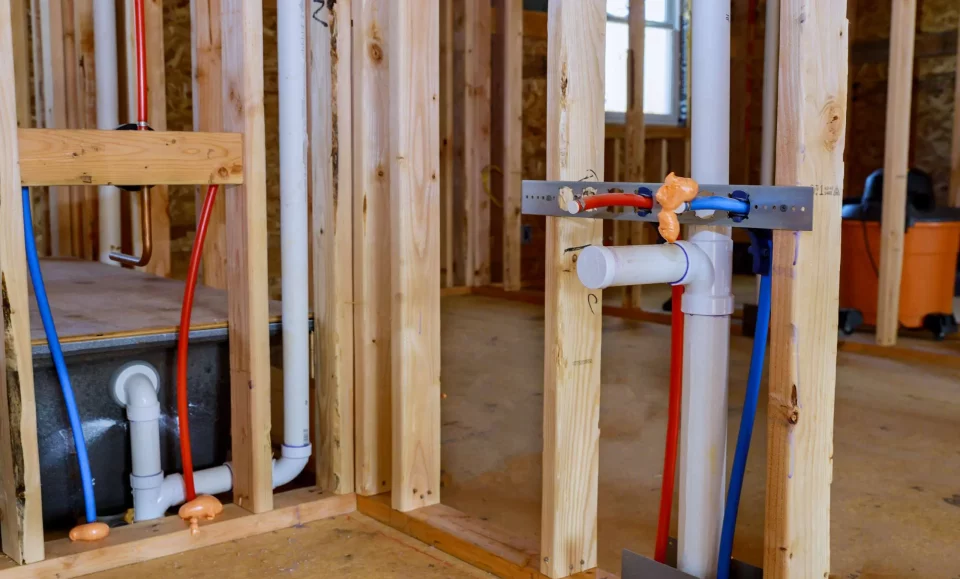When a house is under construction, the owners usually bother only about the texture and color of the walls to make the house look beautiful. They tend to pay less attention to intricate details like bathroom fixtures that are necessary to avoid future problems. Plumbing is an essential aspect of home construction and contractors need to have a proper framework prior to beginning with the actual installation work.
If you are building a new house or upgrading your plumbing system, you need to search ‘plumbing near me’ and hire good professionals to construct or remodel your bathroom. Plumbing is divided into phases: Rough-in and Finish Plumbing. Rough-in plumbing refers to the process of installing vents, pipe connections, sewers, and waterlines. In the finish plumbing phase, as the name suggests, the plumbers will complete all installations along with sealing, caulking, and testing of new connections to get the home ready for residents.
Let’s dig a little more to find out what rough-in plumbing is and how it works.
What is Rough-in plumbing?
Rough-in plumbing is the ‘rough draft’ or diagrammatic representation of the installation work that helps the plumbers get an idea of how the pipes will be laid out. This framework will come in handy when the plumbers will get in action, as they will know where the water supply and drains pipes have to be connected.
Plumbing Rough-in guide
The motive behind making a plumbing rough-in guide is to make sure that plumbers have a pre-requisite knowledge of all product specifications, plans, layouts, etc. before beginning the project.
Here is your plumbing rough-in guide:
- Mark the major locations– Determine the locations of toilets and mark its center on the wall. About a few inches from the center point, make another point on the floor for the toilet flange.
- Cut out the marked section –Cut out the drain hole on the marked areas and position the flange in the hole with the two slots to the sides. Then, bolt the flange to the floor.
- Install drain pipe – At this stage, the subfloor is installed along with the drain-pipe and vent that are placed beneath the floor. Then, drain pipe is directed towards the main waste-water pipe and vent pipe.
- Supply line installation – During this rough-in phase, the supply line is laid through the floor or wall in such a way that it is the closest to the side of the toilet tank water supply fixture.
Here are a few things to check before the process:
– All the pipes connections are routed through wall cavities.
– The vent stacks are run to the roof.
– Water supply and drain lines are linked to the sewer systems and main water supply valves.
– Measurements of the pipes must align with the finished floor height and not with the subfloor height.
– Plumbing installation takes place only after the approval given by the building inspector.
Plumbing rough-in for double sink vanity
The bathroom vanity is a combination of both the sink/basin and the storage attached with it. A double vanity consists of two sinks set in one vanity unit so that two people can use the bathroom simultaneously.
The basics for understanding plumbing rough-in for double sink vanity are:
- Check the rough-in dimensions for the sink to make sure the fixtures fit in your kitchen or bathroom.
- The drain is to be centered in the middle of the double vanity.
- The sink’s water lines are roughed-in right above the drain.
- Ensure that the hot and cold water lines are spaced a few inches apart according to the measurements.
FAQs
What does rough-in plumbing include?
Rough-in plumbing includes the installation of vents, sewers, and drain pipes and water supply connections.
How much does rough-in plumbing cost for a bathroom?
The cost of bathroom plumbing rough-in depends on the number of fixtures that people ask for.
What does FIP stand for in plumbing?
FIP stands for “Female Iron Pipe.” Pipes are categorically sized according to the threads that are inside or outside of the pipe or fittings. FIP threads are on the inside.
How long does plumbing rough-in take?
It takes three to five days to conduct the process of rough-in plumbing.

